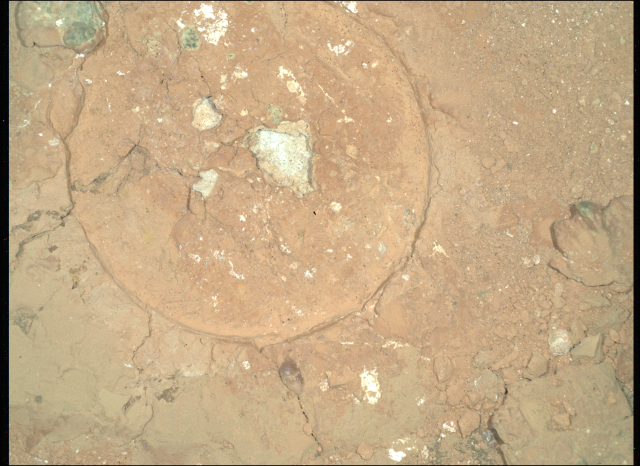Nasa’s Perseverance rover spots shocking ‘green spots’ on Mars
Perseverance rover found surprising marks after examining a part of the Martian surface

Nasa has found shocking “green spots” on Mars.
On Earth, those spots can be a mark of the activity of microbes. Nasa cautioned that there is nothing to indicate the same is happening on Mars – but noted that it was an interesting and unexpected feature in the rock that could be an important find on the planet.
The discovery was made when the Perseverance rover scraped away at a bit of the rock on the Martian surface. The 5 centimetre patch that it left showed what Nasa called a “striking array” of colours in the rock, with white, black and green patches.
One of the biggest surprises was the dark green coloured spots that were found in the patch. They are made up of dark-toned parts with fuzzy and light-green rims around them.
On Earth, we have red rocks that are made that colour from oxidised ion, which is the colour of rust or the red in our blood. In similar rocks to those on Mars, green spots of this kind can be seen, and form when water runs through the sediment before it hardens into rock, which changes the chemical reaction and leaves behind a different, green colour chemical.
Microbes are sometimes involved in that process on Earth. But it can also happen for other reasons, including interactions between sulphur and iron that don’t need microbial life.
Nasa did not have enough space to place Perseverance’s other instruments on top of the green patches to better understand their composition. It remains a “mystery”, Nasa noted.
But the space agency will continue to look for similar and unexpected features in the Martian rock, in the hope that it can explore them and perhaps find hints of alien life.
Join our commenting forum
Join thought-provoking conversations, follow other Independent readers and see their replies
0Comments